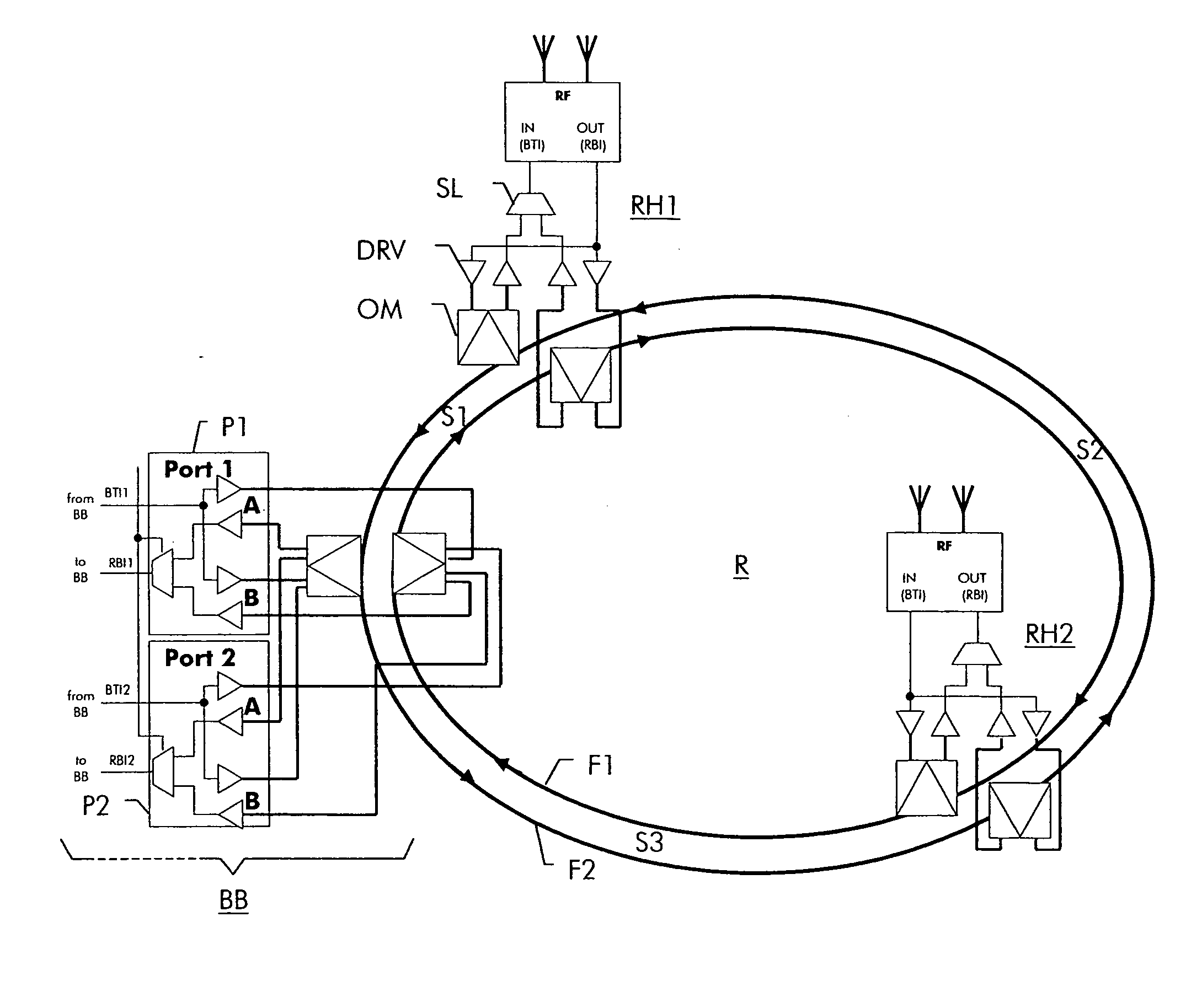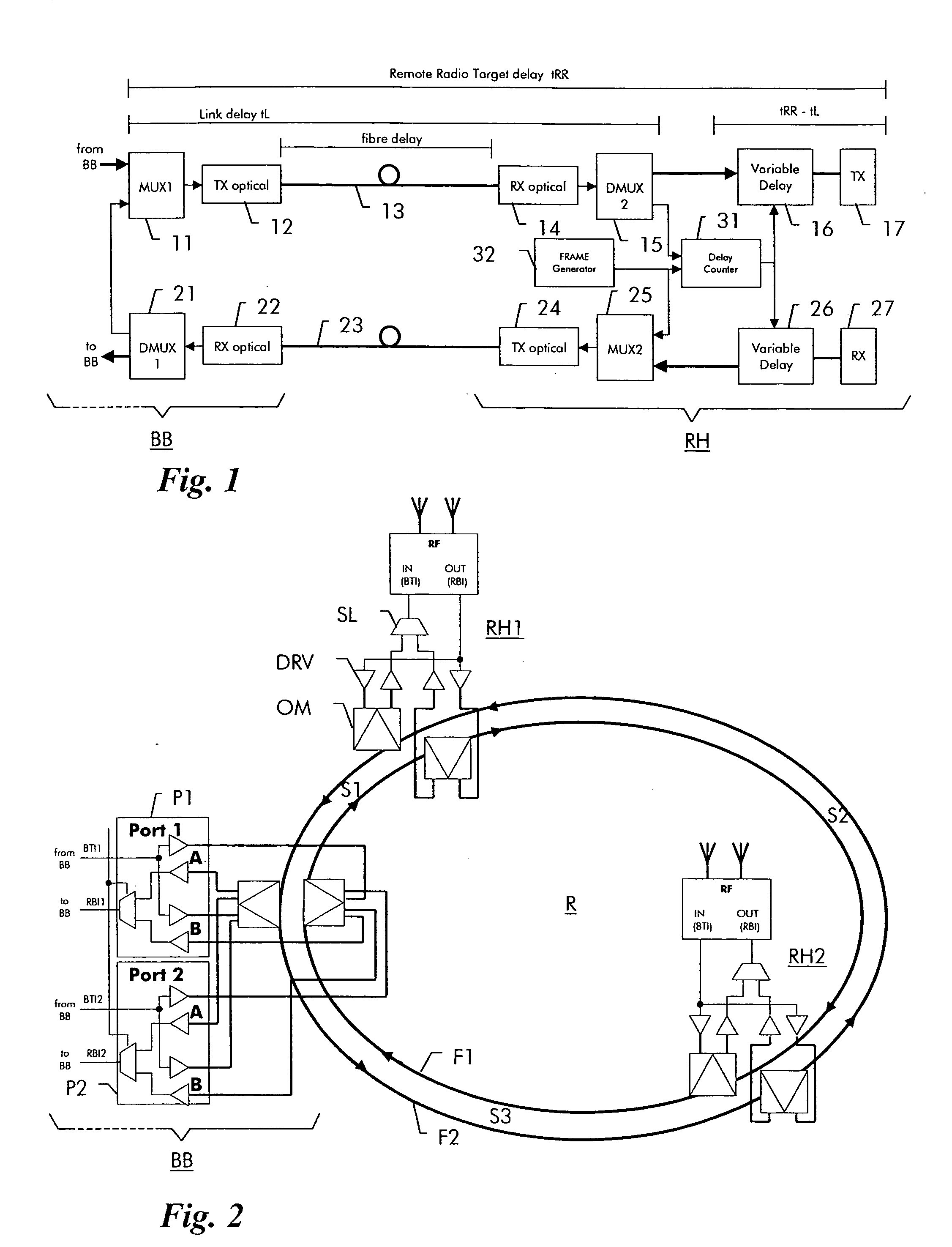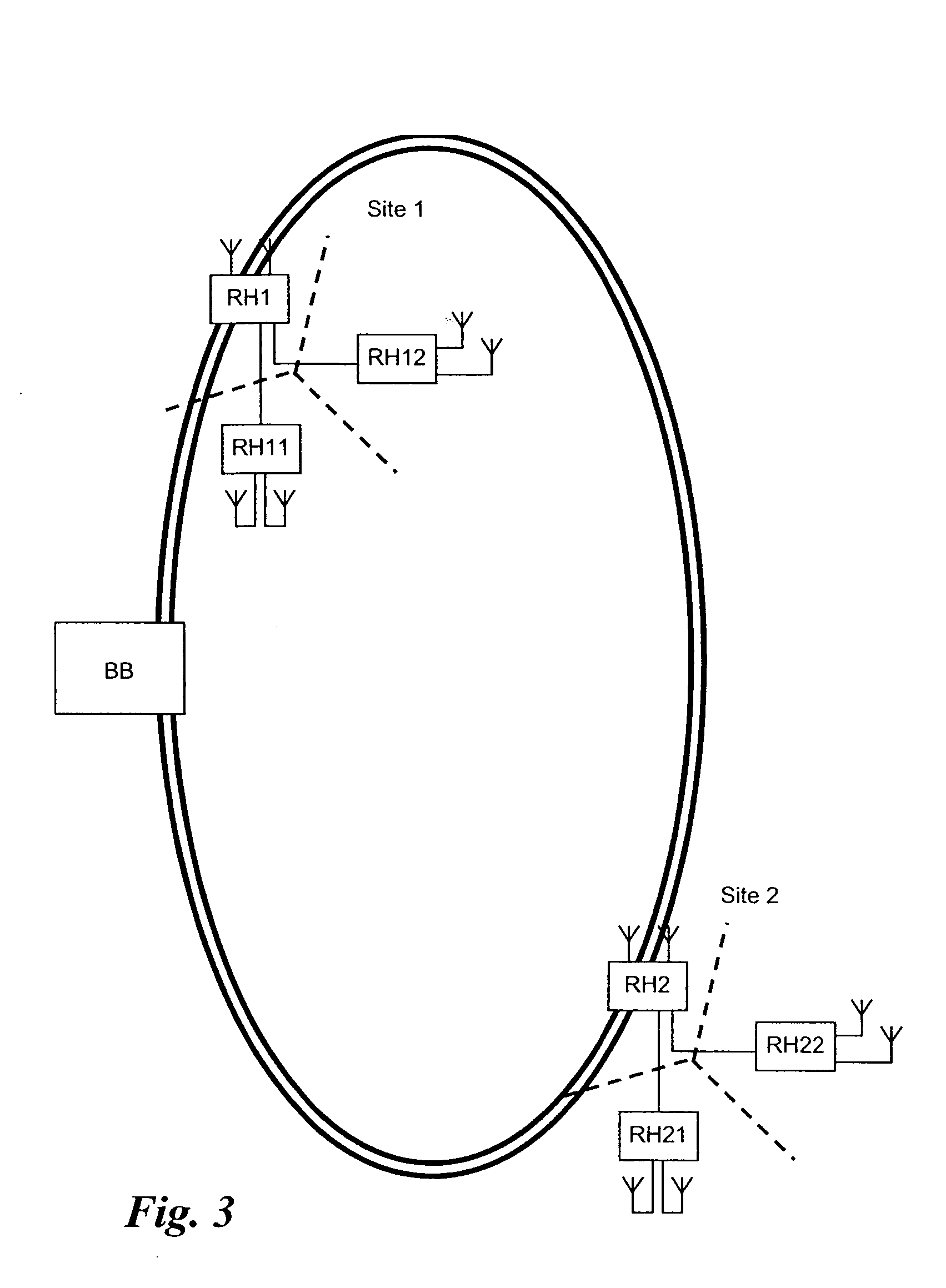Radio base station with multiple radio frequency heads
- Summary
- Abstract
- Description
- Claims
- Application Information
AI Technical Summary
Benefits of technology
Problems solved by technology
Method used
Image
Examples
Embodiment Construction
[0014] A base station with the optical interfaces of a baseband unit BB and one remote radio frequency (RF) ead RH hown by way of example in FIG. 1. The baseband unit BB as such is not shown in the figure. In transmit direction, the baseband signal from the baseband unit is fed to a multiplexer 11, which is connected to an optical transmitter 12. Transmitter 12 is connected via an optical fiber 13 to an optical receiver 14 of RF head RH. Optical receiver 14 leads to a demultiplexer 15. The signal extracted by demultiplexer 15 is connected via a variable delay circuit 16 to a radio transmitter 17. In receive direction, a radio receiver 27 in the RF head is connected via a variable delay circuit 26 to a multiplexer 25, which leads to an optical transmitter 24 of the RF head. Transmitter 24 is connected via an optical fiber 23 to an optical receiver 22 of the baseband unit. A demultiplexer extracts baseband signals received from the RF heads and forwards them to the baseband unit BB (n...
PUM
 Login to View More
Login to View More Abstract
Description
Claims
Application Information
 Login to View More
Login to View More - R&D
- Intellectual Property
- Life Sciences
- Materials
- Tech Scout
- Unparalleled Data Quality
- Higher Quality Content
- 60% Fewer Hallucinations
Browse by: Latest US Patents, China's latest patents, Technical Efficacy Thesaurus, Application Domain, Technology Topic, Popular Technical Reports.
© 2025 PatSnap. All rights reserved.Legal|Privacy policy|Modern Slavery Act Transparency Statement|Sitemap|About US| Contact US: help@patsnap.com



